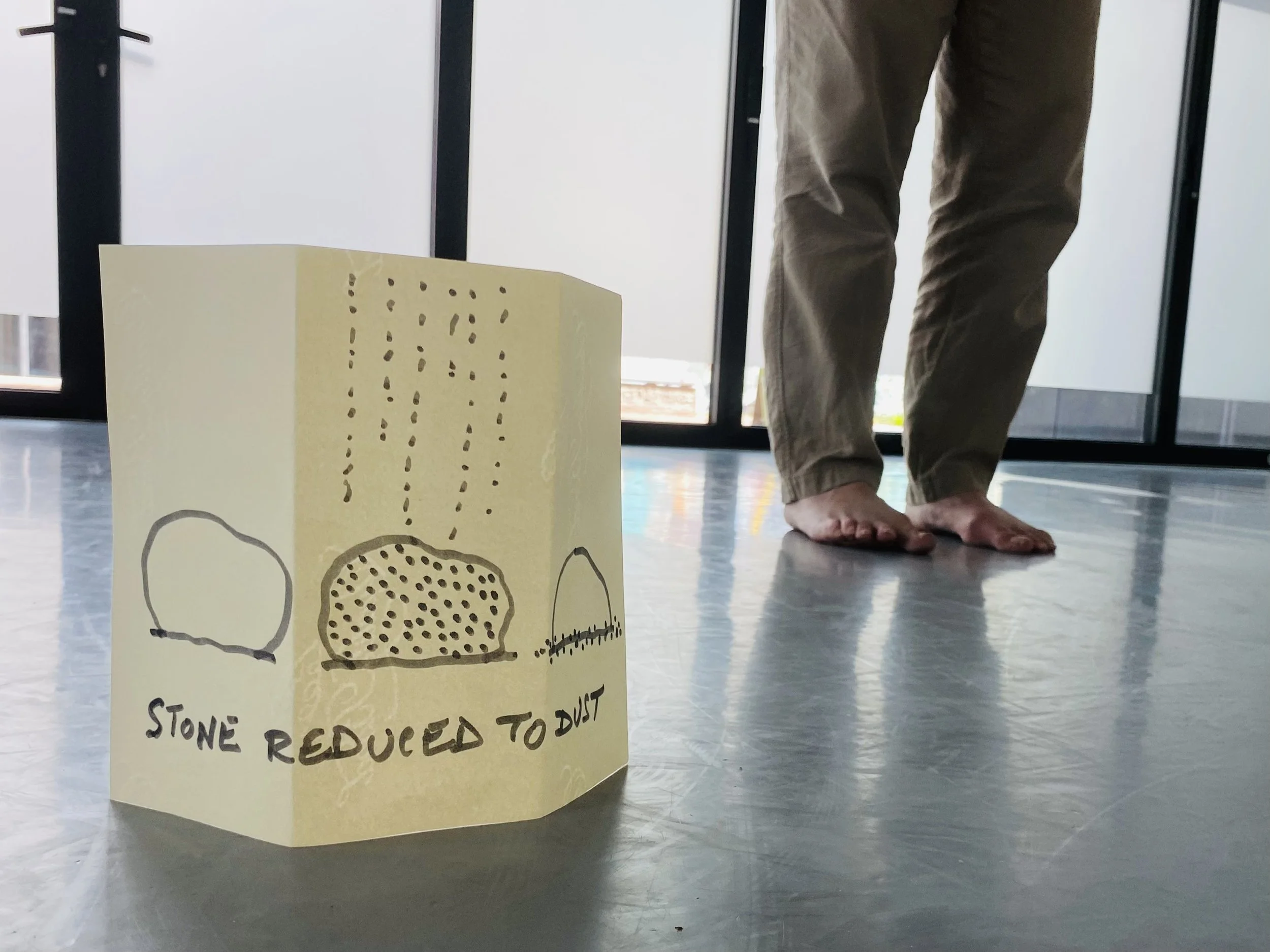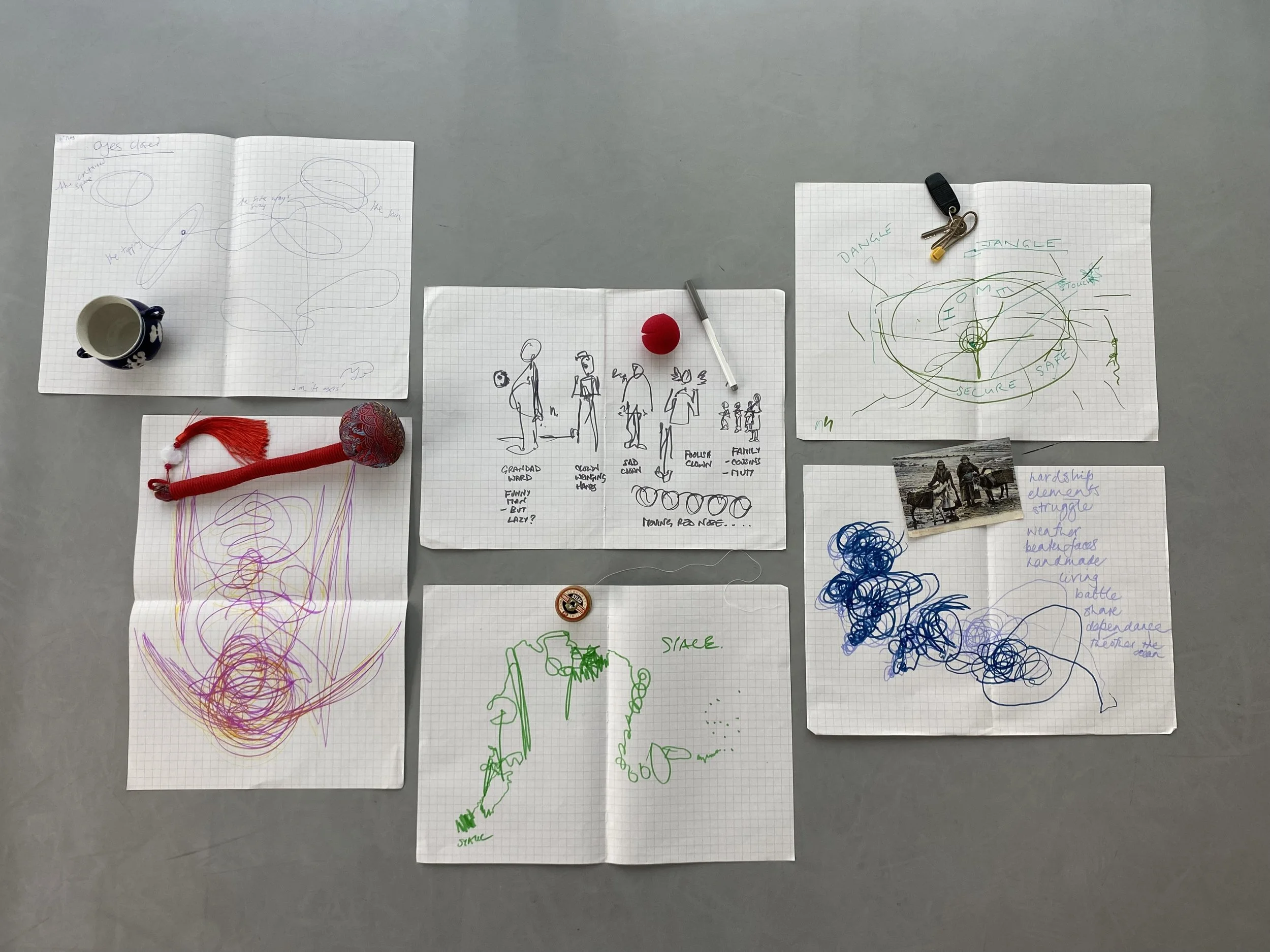The Space Between Words and Movement: Exploring the gaps, tensions, and bridges between felt experience and language
Julian Howells, Three Score Dance creative class
Where does sensation go when we try to put it into words?
Is struggling to find the right words a problem or part of the process?
What gets lost, or gained, when embodied experiences are translated into words?
What connects (or separates) what we feel from what we can say?
And how do we honour the intelligence of the body without forcing it into language?
As an embodied movement practitioner I find that after an experience that is deeply rooted in the body- in feeling, in sensation- the act of describing or notating it diminishes its power. The language of words has always felt so reductive to me. I had to make peace with this during my MA, particularly in practical research seminars where we were encouraged to shift register from felt experience to spoken or written reflection. Sometimes we were even asked to commentate our thought processes while dancing; narrating movement in real time as it unfolded.
This is familiar territory. In dance theatre work performers are often asked to narrate their actions, either literally or as a stream of consciousness. My strategy for managing this has been to slow down and simplify my physical exploration to the point where it could co-exist with the spoken word. My body would shift into autopilot, which allowed my brain to focus on finding a spoken language, fishing around for words and sentences that might form something coherent.
I often feel a disparity between movement and words. My body feels light years ahead of my verbal capacity to express what’s happening. The sophistication, the sensory richness, the intelligence that ignites during somatic work is hard to capture in language. Spoken words feel clunky, late to arrive, and ultimately inadequate. I don’t just lack vocabulary; the words I do find often feel disappointingly plain and overly certain. I never feel that way with movement. If it expresses something authentically in that moment, then its enough.
Recently, this came up in a creative class I’ve been leading for Three Score Dance. After guiding the group through an improvised movement score, I invited them- as I often do- to move towards writing, drawing, or mark making. While some participants enjoy this transition, one in particular found it uncomfortable. I recognised that reaction. It’s a knee-jerk resistance I share myself; that sudden shift from expansive freedom to the constraints of words or marks on a page.
At the same time, I know that resistance can be generative. It can lead somewhere new, and offer something tangible to return to later. Last week, I invited the group to repeat the same transition but with their eyes closed. That simple change became a bridge, softening the shift in register and producing some beautiful ‘maps’ on the page that they felt a more embodied connection to.
Not everyone shares this conflict with language. I have friends for whom speaking and writing is like water flowing freely. Language seems to pour out of them with ease, certainty, nuance and colour; powerful and complex combinations of words and vocabulary are immediately accessible. I’ve been asked whether it’s just a matter of practise, perhaps it is. But it makes me think: what kind of results would more practise produce? Greater language fluency? Faster word recall? How would approaches to movement exploration change as that ‘muscle’ for finding a formal language strengthened? Might it begin to shift, shape, or even limit, explorations that sit in that beautiful place of sensation, colour, energetic flow and other things there are no words for? Or might it lead to greater physical expansion and curiosity?
Alongside these thoughts, I am conscious that ‘finding my words’ may or may not be a real ‘issue’ for me. I had ‘selective mutism’ as a child- something I’ve only come to understand more recently, thanks to my older sister, a speech therapist, who named it for me. I remember words being there, just stuck in my head, and I remember feeling frozen when prompted to speak. It was in groups, new situations, school, with all adults (apart from my mum), hobbies, family gatherings etc, and continued until I left home pretty much. Not surprisingly movement took over as a perfectly silent way to express myself. I have heard of others who came to dance for similar reasons, and I encounter students for whom speaking is a real challenge beyond just a generally shy nature. As a fully-fledged grown-up I am confident speaking in most situations now, but occasionally I feel my heart rate rocket and words fly around my brain in some kind of frenzied dance as I approach my turn to speak. I also regularly have to substitute in words or phrases which my brain won’t allow me immediate access to, which is annoying. Generally no one would have a clue, as with most performers we are excellent at masking, but I could do without the excitement and adrenalin spike! Movement and physical expression on the other hand flows out of me like water, like breathing, with no fear, no stumbling, no frustration. I wonder how many people feel this way about spoken language and have never known the ease and freedom that movement might bring to them.
Maybe I do need more practise. But maybe, too, the gap between movement and language isn’t a problem to solve. Maybe it’s just part of the artistic terrain- a space of tension and also a space of possibility.
‘Maps’ created with eyes closed following movement exploration. Three Score Dance creative class.

